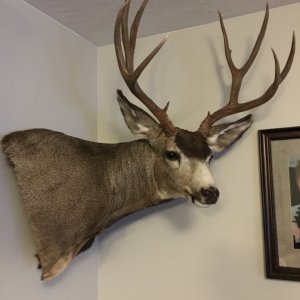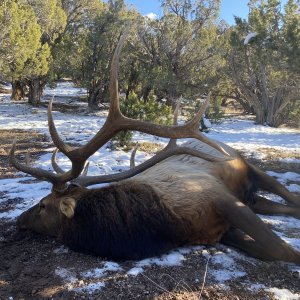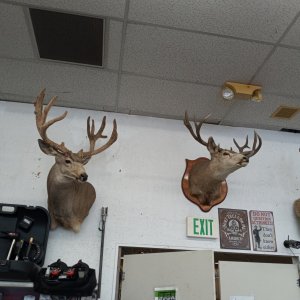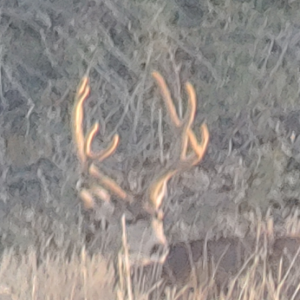LAST EDITED ON Oct-25-09 AT 01:10PM (MST)[p]Since you did not mention what make and model of rifle, I would do some checking to make sure it does not have great collector value such as a pre-64 model 70 Winchester that is all original.
If it's value is just as a shooter, you can refinish it if you want to go that way. As for the finish result, that is going to lie with you and how you go about doing the finish work.
#1 do not get in a hurry. Plan to make it a winter job that will take you a month or more doing it in stages.
#2 Remove all metal, leave the butt pad on so you can sand it flush with the wood for a good finish fit. If it has checkering, you may elect to sand around the checking unless you know how or have someone that can recut the checkering.
#3 Remove the old finish. You may be able to use paint stripper, or you can elect to sand the old finish off with 220 grit. Once the old finish is off, check the wood for any dents, most old stocks will have them from use in the field.
#4 If there is dent, where the wood has been compressed down, not a cut or gouge. heat a screwdriver tip that is wide enought to cover the dent to about 400 degrees. Place a moist cotton cloth on the dent and press the hot screw driver flat to it. this will steam out the dent and cause the wood fibers to raise. You may have to do this several times to level the wood.
#5 Sand the stock with 220 or 320 grit paper using a sanding block and you can sand down any small scratches in the wood. Repeat the sanding using finer grits down to a 400 grit. Pay close attention to curves and recesses that you find around the cheek pad and grip. You can fold your sanding paper and use your fingers to sand these curves. How well you do the sanding job will make all the difference in the world how well the stock turns out. Do not take any shortcuts or go to fast. You can not replace the wood if you sand too much off. Try to follow the original contours of the stock as close as possible.
#6 Straight tung oil or linseed takes to long to dry between coats. Do not use it unless you want to spend the intire winter doing the job. Buy a bottle of Tru-oil or Lin-speed oil. It has the oil in it with drying agents to speed up the drying.
#7. Apply the first 2-3 coats with your fingers and put it on heavy. It will soak into the stock. after it fully drys, may take several days in the winter time. sand it down flush with the wood. do not sand any further, you are only trying to level the surface of the oil finish with the upper surface of the wood. this fills all the wood pores. Use 400 grit wet-dry sanding paper to do this and soak the paper in water prior to sanding. Wipe off the wet sanding mess. Hold the stock up to a strong light. If you see little bright spots, like little diamonds glittering, you have not fully finished filling the wood pores. Put several more coats of tru-oil on and repeat this step again until all pores are filled. This is very light wet sanding to level the surface, you are not trying to remove more wood at this stage.
#8 Now you will put on the finish coats of oil.takes 3-4 coats. Use your fingers to apply very smallamounts of oil and rubbed it in with you finger tips until you feel your fingers dragging with friction. Work small areas of the stock until you have applied the oil to the complete stock. There should be no runs at this stage.
allow each coat to fully dry for 48 hours or more. You can hang the stock near a water heater to aid the drying in the winter months. Leaving it in a unheated garage will take far longer to dry.
#9 After the 3-4 finish coats have been applied, you should have a finished stock with no runs or uneven surface and the intire surface will shine from the dried oil finish. If you have any dull spots, where the wood soaked up the oil, apply more coats to these spots untill it matches the shiny surface of the intire stock.
#10 You can leave the surface shiny or you can use a fine wood rubbing compound to leave a satin finish to the stock. You can purchase the compound from Brownells and it comes in several finish grades. Do not use automotive paint rubbing compound, it is too course. Apply several coats of a good wood paste wax and buff with a soft cotton cloth. When you are apply the heavy coats of oil in step #7, apply several coats to the inside of the barrel channel and receiver area to water proof these areas. and allow it to soak in. Most factory stocks have very poor sealing of these areas. No need to sand those areas.
Now do you really want to tackle this job and do it right?
I have seen first timers do a outstanding job on a rifle stock, and I have seen some that the stock needs to be thown away and burned.
RELH













